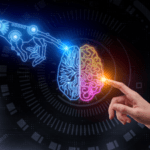Artificial intelligence (AI) is advancing at an astounding pace, being integrated into virtually every piece of software and service we use today.
From search engines to digital assistants to customized recommendations, AI is quickly becoming engrained into modern technological life.
However, as promising as these innovations may be, the rapid development of AI poses very real threats to privacy and security that cannot be ignored.
The Speed of AI: Why It’s Taking Off
The recent explosion of AI capabilities can be attributed to two key factors:
- Faster computer processing via GPUs and neural networks
- The massive increase in digital data being generated and collected
With immense computational horsepower now affordable even to small startups, complex neural network architectures can be trained on gigantic datasets harvested from users and IoT devices.
This combination enables previously unimaginable AI accomplishments, such as:
- Digital assistants understanding natural speech
- Automated customer support chatbots
- Personalized medicine analyzers
- Self-driving vehicles
The raw potential for AI to transform entire industries and enhance human capabilities is simply tremendous. However, we must address the darker side of this coin.
How Does AI Learn?
At its core, AI is powered by machine learning algorithms that extract patterns from training data in order to make predictions or decisions without explicit programming.
By feeding these algorithms vast amounts of images, text documents, recordings, sensor data, and more, the AI models refine their ability to classify information, generate content, optimize decisions, and increasingly mimic human cognition.
This reliance on data is a double-edged sword.
The same data used to empower AI for good can be exploited, manipulated, and abused by bad actors in extremely dangerous ways if adequate protections are not put in place.
Unfortunately, securing and validating the integrity of AI training data at scale is astonishingly difficult.
The Fast Lane of AI Development: Why It’s Risky
While the innovations driven by AI hold world-changing promise that demand continued research, the current unchecked gold rush to implement AI for competitive advantage and profits carries catastrophic risks to individuals and society that regulators have barely begun to grasp.
As the NIST report highlights, the rapid integration of often poorly understood AI systems into critical real-world applications such as healthcare, transportation, finance, and defense, introduces many vectors for exploitation that range from nuisance to nightmare scenarios.
These threats are only amplified by the opaque complexity of modern AI methods.
The report categorizes these risks into four primary channels of attack:
- Evasion Attacks: Hackers crafting adversarial data inputs that cause AI systems to fail in dangerous ways, like tricking a self-driving vehicle into ignoring a stop sign.
- Poisoning Attacks: Sabotaging the integrity of AI training data to silently corrupt its decision making, creating huge liability.
- Data Privacy Attacks: Stealing private user data via intricate questioning of public AI chatbots and support agents.
- Abuse Attacks: Manipulating recommendations and decisions made by AI that increasingly run digital systems and infrastructure.
Staying Safe: Guarding Against AI Threats
With advanced AI already deployed in the wild and its progress only accelerating, we do not have the luxury of waiting for ironclad security solutions before proceeding.
Like the early days of the internet, achieving AI’s immense promise and upside necessitates accepting some level of risk.
However, that does not mean blindly charging ahead with reckless abandon as we have seen with products like social media.
Businesses looking to leverage AI must invest substantial resources into understanding, measuring, and mitigating the potential dangers at each step, even at the cost of slowing innovation.
Users and policy makers also have critical roles to play in forcing accountability.
There are no easy choices, but progress demands prudent management of both the marvelous upsides and hazardous downsides of rapidly advancing technology.
As AI continues its relentless march into every facet of life, we must remain as vigilant about its risks as we are enthralled by its magic.
The future remains unwritten.





